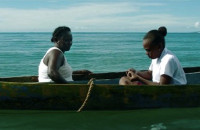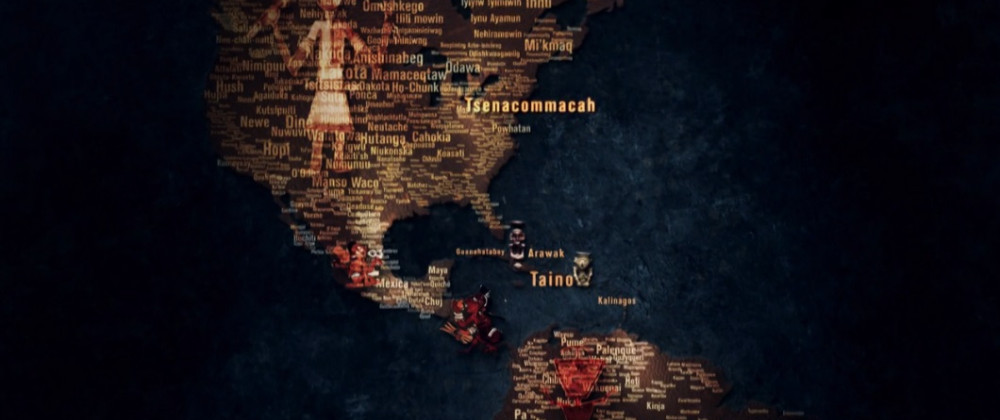Volume 26, Issue 12 / December 2022
Perspectives on Global Cinemas
In this issue
-

Exterminate all the Brutes (Raoul Peck, 2021) & Speakers for the Dead (David Sutherland & Jennifer Holness, 2000)
-

Land in Outback Noir Films: Trope of Spatial Alienation of Aboriginal People in Ivan Sen’s Mystery Road (2013) and Goldstone (2016)
-

Soul Sisterhood: A Continuous Take on Pasifika Femininity, Heritage, and Community in Vai (2019)
-

A Synchronous Brew of Spice, Song, and Memory: Unpacking the Transgressive Layers of Ritesh Batra’s The Lunchbox
-

In the Bright Shadow of Gandhi’s Hope: Tragic Choices in Deepa Mehta’s Water and Gurinder Chadha’s Viceroy’s House
As the last issue of 2022 Offscreen offers a special issue focused on films that represent lesser covered (at least in North American) National cinemas. The essays that are covered in the issue feature the Indigenous people of Australia (or “Torres Strait Islander People”), the people of the Pacific Islands (Pasifikas), and the (many!) people of India. The issue begins with an epic documentary by Raoul Peck that can serve as a primer for the rest of the essays, Exterminate all the Brutes, as it casts a brutal critical eye on how the “western” world has been built on a 1000 years history of assumptions, lies, prejudices, broken treaties, colonial conquests, planned genocides, economies of slavery and servitude (and much more). In “Land in Outback Noir Films: Trope of Spatial Alienation of Aboriginal People in Ivan Sen’s Mystery Road (2013) and Goldstone (2016), writer Parvathy Das deals with the representation of Aboriginal people with regard to the role of land in the colonial past and negotiations with contemporary power structures. Das “argues that the spatial alienation of Aboriginal people is an extension of colonial violence and a reclamation of their right to land is integral for the assertion of their identity”. M. Sellers Johnson analyses the portmanteau film Vai (2019, nine directors, 8 stories), which focuses on female-centric Indigenous narratives exclusively centered on Pasifika-authored stories. One of the things that links this article to some of the others in this issue, is how they (either author or filmmaker) stresses the importance of Native and Indigenous self-representation, especially after 100 or so years of white filmmakers misrepresenting the lives of Indigenous peoples, or promoting harmful and distorted stereotypes of Indigenous peoples. The concluding two essays are centered on India in theme and/or setting. In her review essay of the 2013 Indian film The Lunchbox, “A Synchronous Brew of Spice, Song, and Memory: Unpacking the Transgressive Layers of Ritesh Batra’s The Lunchbox”, writer Sakhi Thirani looks at the film’s cinematic treatment of space in the city of Mumbai, focusing specifically on the way the soundscape (natural sounds, noise, and music) offers a more expansive image of urban life. Thirani write, “Unlike the picturesque gaze of a much better known film set in Mumbai, Slumdog Millionaire (Danny Boyle, 2008), which presents the stereotypical image of a poverty-stricken India in general, and Mumbai in particular, The Lunchbox explores the city of Mumbai in a nuanced and utterly non-exploitative way.” In the essay “In the Bright Shadow of Gandhi’s Hope: Tragic Choices in Deepa Mehta’s Water and Gurinder Chadha’s Viceroy’s House” writer Daniel Garrett looks at three films, Water (2005), Viceroy’s House (2017) and Richard Attenborough’s Gandhi (1982), which collectively are concerned with the life of the great Indian revolutionary activist and leader Mahatma Gandhi, India’s fight for independence from colonial Britain, the role of key British diplomats and leaders (Lord Mountbatten), religious disputes which eventually led to the separation of the British Indian Empire into the Hindu-majority India and the Muslim-majority Pakistan, and Mohammed Ali Jinnah, the founder of Pakistan. Stay tuned for the next double issue, which will feature more essays on Global Cinema and a focus on Alfred Hitchcock. (Donato Totaro, ed.)









